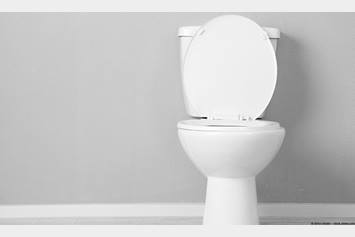Constipation in Children Over One Year of Age
Constipation is a change in the child's stool or bowel habits. Children may have constipation if their stools are too hard, too infrequent, too painful or too large.
Constipation (con-sti-PA-shun) is common in children but can worry parents. A constipated child has problems moving their bowels (BMs or pooping), do not have BMs often enough, or the stool (poop) is hard or dry. It is rarely caused by a medical condition that the child was born with or by a problem digesting food.
What Causes Constipation?
- no regular habit of having a bowel movement (BM or pooping)
- starting toilet training too early
- holding the poop in. A child holds the poop in because they are afraid it will hurt to have a BM. It may be too large, too wide or too painful to push out.
- put off pooping. A child may be too busy playing and not want to stop.
- change in activity or daily routine
- change in diet
- certain medicines
Constipation is often temporary, easy to prevent, and easy to treat if you know its causes and signs.
Signs of Constipation
- stomach pain or cramping
- less than 3 bowel movements in a week
- change in how the stool looks – hard, dry little logs, sausages, or balls
- blood on the surface of hard stool
- unusual pain when pooping
- fecal soiling – finding traces of poop in your child’s underpants. This may be a sign that their stool is backed up in the rectum (Picture 1).
- child hiding in the corner of a room or suddenly becomes very quiet and still when playing or talking
What to Do
- Retrain your child’s body to have regular bowel movements. If your child is toilet trained, work with them to make going to the bathroom a regular habit. Choose the same time every day and follow the same routine.
- It is best to try after a meal.
- Have your child sit on the toilet for 5 minutes after eating, to try to have a BM.
- Place a footstool under their feet so they do not dangle. Tell your child to lean forward.
- Try to stay calm and not be too concerned if your child does not have a BM. Let them try again later in the day.
- Look at the stool each time so you know what is normal and not normal for your child. The stool should be soft, like mashed potatoes.
- Have your child drink diluted 100% fruit juice. A serving of prune juice or prunes once a day may help.
- Teach your child to come in from play every time they have the urge to poop.
- Encourage them to be active by playing instead of sitting.
- If these things do not work, ask your health care provider to recommend an over-the-counter (OTC) medicine. Be sure to find out the right dose for your child, when to take, and for how long. OTC medicines for constipation often do not have this information on their label.
- To help prevent constipation, give your child foods high in fiber, like whole grain cereals, breads, fruits, and vegetables. Encourage them to drink water throughout the day.
What Not to Do
- Never punish your child when they cannot poop or if they have an accident in their pants. They do not do this on purpose. Punishment can stop them from learning good habits.
Rewards
- All children like to be rewarded for doing a good job. Every time your child sits on the toilet long enough to poop, give them a reward. Do this whether they have a BM or not. The reward can be simple, such as a favorite TV show or a sticker.
- Use a calendar or daily record to keep track of their successes.
- After a few weeks, agree on a greater reward for sitting on the toilet. In time your child will get used to going to the bathroom at the same time every day. It will become a habit.
Fecal Impaction, Incontinence, and Soiling
When a child is constipated for a long time, sometimes the stool gets bigger and bigger, stretches the inside of the rectum, and gets stuck. This is called fecal impaction. When the nerves and muscles in the rectum get stretched over and over again, the child may not feel the urge to poop any more. Liquid stool can leak around the harder, backed-up stool (incontinence) and seep onto underwear (soiling). It may seem as if the child has stinky diarrhea. When the stool gets stuck like this, your child’s health care provider will need to clean it out. They will work with you on how to prevent your child from having an impaction again. Treatment may take many months.
When to Call the Health Care Provider
Call your child’s health care provider if you see any of the following:
- bright red streaks of blood in the stool
- no bowel movement for 3 days
- pain in the stomach or rectum along with constipation
- vomiting, constipation, and your child’s belly looks bloated or filled with gas
- fecal soiling or accidents in their pants
Helping Hands Patient Education Materials
Written and illustrated by medical, nursing and allied health professionals at Nationwide Children's Hospital, Helping Hand instructions are intended as a supplement to verbal instructions provided by a medical professional. The information is periodically reviewed and revised to reflect our current practice. However, Nationwide Children's Hospital is not responsible for any consequences resulting from the use or misuse of the information in the Helping Hands.
HH-I-15 | ©1984, revised 2022, Nationwide Children’s Hospital



